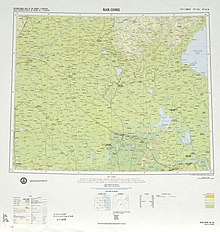Jih-chao
Jump to navigation
Jump to search
English
[edit]
Etymology
[edit]From Mandarin 日照 (Rìzhào), Wade–Giles romanization: Jih⁴-chao⁴.
Proper noun
[edit]Jih-chao
- Alternative form of Rizhao
- 1962, Kwang-chih Chang, edited by Robert J. Braidwood and Gordon R. Willey, China (Courses Toward Urban Life)[2], Chicago: Aldine Publishing Company, published 1966, →LCCN, →OCLC, page 184:
- There is also some evidence of a differentiation of personnel in other terms at this stage. At the Liang-ch'eng-chen site in Jih-chao on the coastal Shantung, there was one spot where finely made jade objects were concentrated.
- 1971, John E. Schrecker, Imperialism and Chinese Nationalism[3], Cambridge, Mass.: Harvard University Press, →ISBN, →LCCN, →OCLC, page 98:
- Another reason Jaeschke did not withdraw immediately was that Heyking felt the presence of German troops at Jih-chao gave him leverage in his negotiations with the Tsungli Yamen over the Tientsin-Chinkiang Railway.
- 1983, Louisa G. Fitzgerald Huber, “The Relationship of the Painted Pottery and Lung-shan Cultures”, in David N. Keightley, editor, The Origins of Chinese Civilization[4], University of California Press, →ISBN, →LCCN, →OCLC, →OL, page 199:
- The report of the excavations at this site was published later in 1976 (Shan-tung-sheng, Tung-hai-yü, and Jih-chao 1976); but prior to the availability of stratigraphical evidence, it seemed fully apparent that the pottery associated with the Jih-chao and Wei-fang areas—where we meet for the first time a high percentage of black wares turned on a fast wheel—represented a phase subsequent to that at Hsi-hsia-hou.
Translations
[edit]Rizhao — see Rizhao